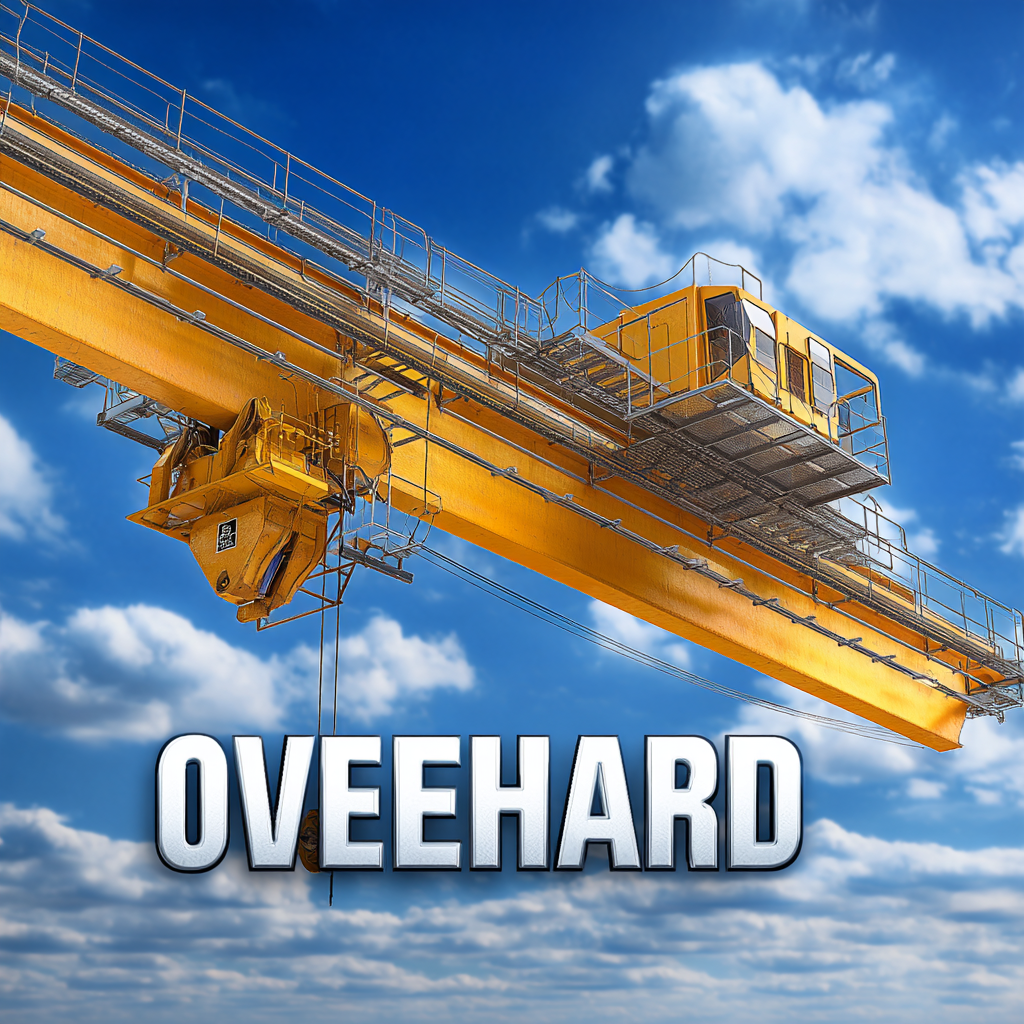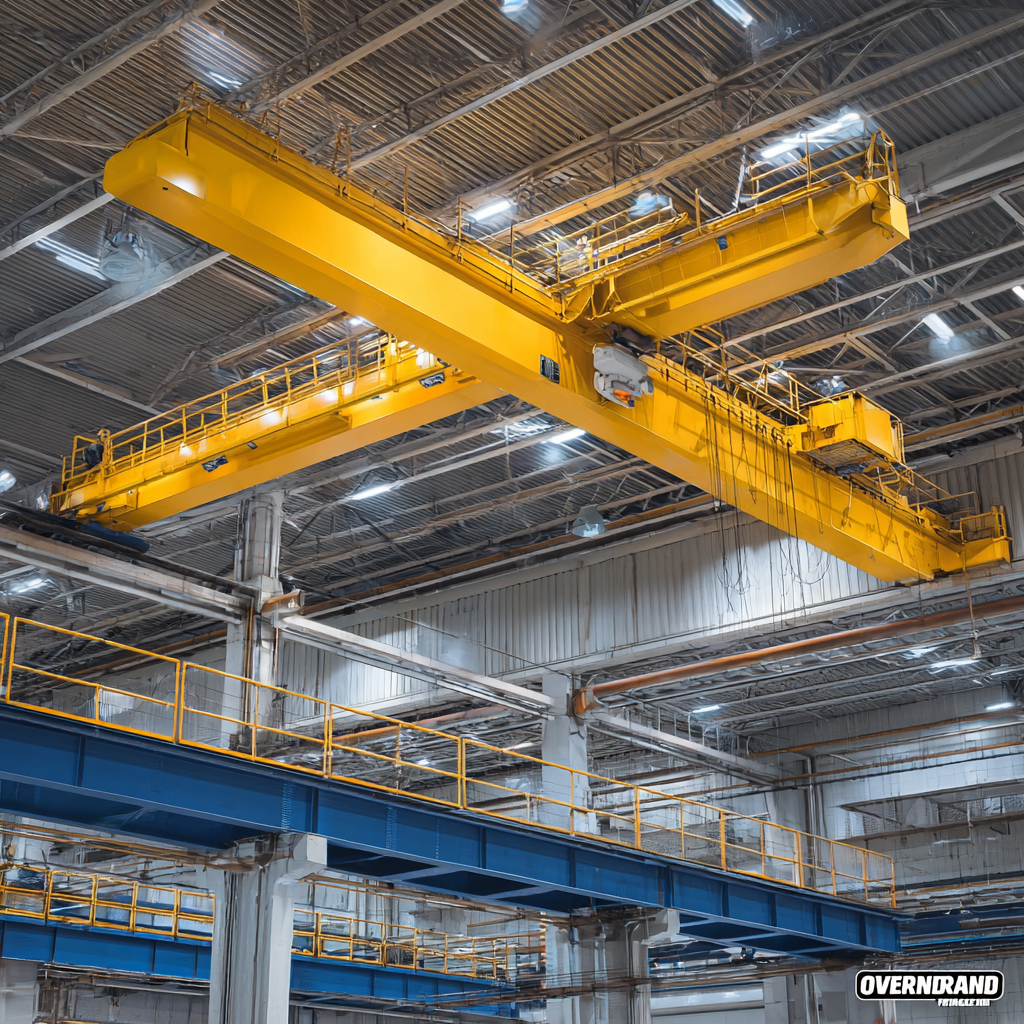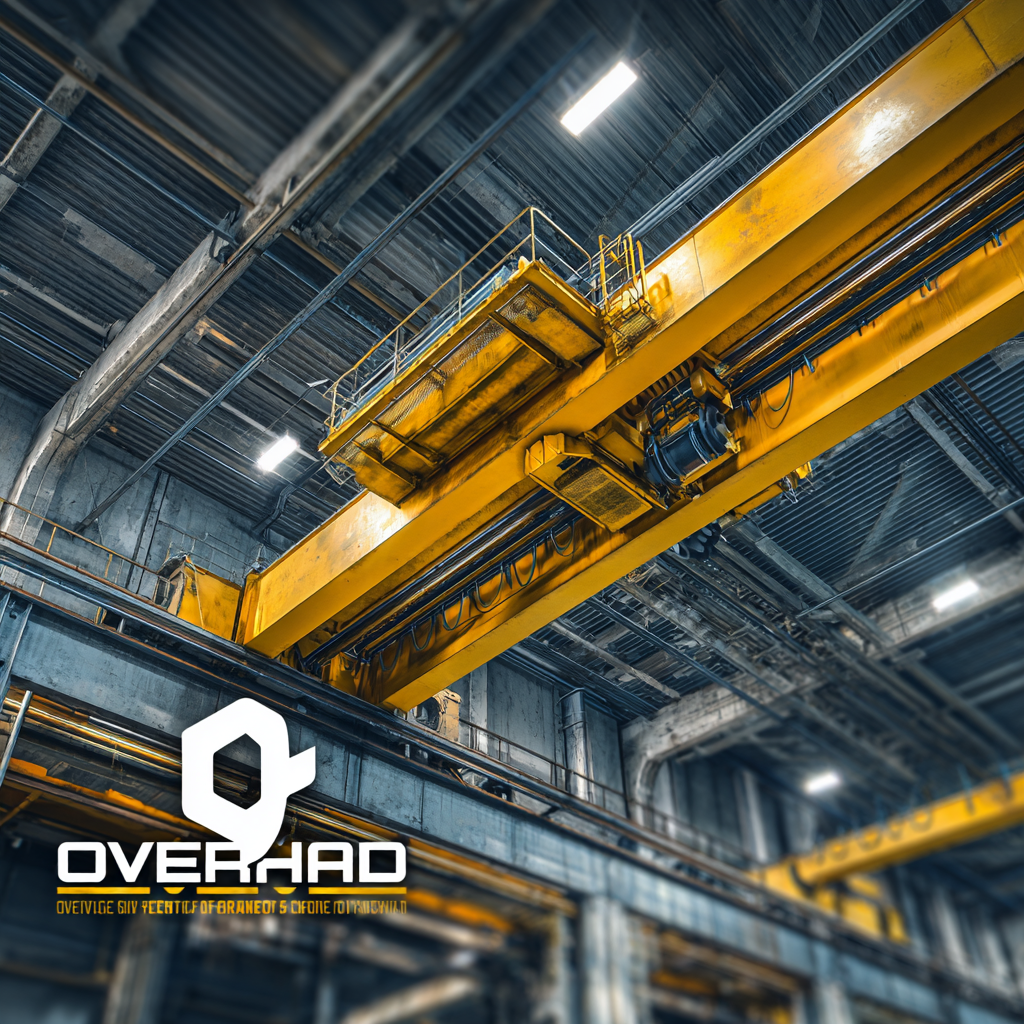Inquiry
Form loading...
-
Phone
-
Wechat

-
Whatsapp

Choosing the right overhead crane is crucial for the efficiency and safety of your operations, especially in industries requiring heavy lifting and precise movements. As businesses seek to enhance productivity while ensuring the well-being of their workforce, understanding the key factors involved in selecting an overhead crane becomes paramount. This guide draws from insights provided by top manufacturers in China, showcasing how their expertise has built global trust in the performance and reliability of overhead cranes. From load capacity to operational environment, the right overhead crane can significantly impact your business's operational capabilities and ultimately contribute to your success in a competitive market. With these seven essential tips, you will be well-equipped to make an informed decision that aligns with your specific needs and goals.

When selecting the best overhead crane for your business, understanding key technical specifications is crucial to ensure optimal performance and safety. First and foremost, lifting capacity is a primary consideration. According to the Bureau of Labor Statistics (BLS), overhead cranes account for a significant percentage of material handling injuries; thus, choosing a crane with an adequate lifting capacity—typically ranging from 1 ton to over 100 tons depending on industrial needs—is essential to prevent overloads.
Another vital specification is the span of the crane, which refers to the distance between the two crane supports. Research from the Crane Manufacturers Association of America (CMAA) indicates that spans can vary widely, typically from 10 to 100 feet or more. Selecting the appropriate span is important not only for workspace efficiency but also for the crane’s stability. Additionally, the duty cycle rating should be analyzed; cranes are often classified by their service frequency, impacting both their efficiency and longevity. Higher duty cycle ratings indicate cranes designed for more intensive operation, aligning with production demands and minimizing downtime. Understanding these specifications can lead to more informed and effective decision-making when acquiring an overhead crane.

When selecting an overhead crane for your business, understanding load capacity requirements is paramount. The load capacity refers to the maximum weight the crane can safely lift without risking equipment failure or safety hazards. It is essential to evaluate not only the heaviest item you intend to lift but also the nature of the loads, which may include dynamic forces during lifting, swinging, or acceleration. Each crane model is designed with specific load limits, and exceeding these can lead to catastrophic failures, posing risks to both personnel and machinery.
Moreover, it’s crucial to consider the frequency of use and the lifting height. If your operations require frequent lifting of substantial weights at significant heights, you'll need a crane that can handle continuous strain without compromising performance. Be sure to consult with crane manufacturers or experts to align your operations' specific load requirements with the right crane specifications. This careful assessment will ensure that you not only choose a crane that meets your capacity needs but also enhances the efficiency and safety of your operations.
| Tip No. | Tip Description | Load Capacity Requirement | Recommended Crane Type |
|---|---|---|---|
| 1 | Assess the maximum load weight | Up to 5 tons | Single Girder Crane |
| 2 | Evaluate the span length | Span over 10 meters | Double Girder Crane |
| 3 | Consider the height of lift | Height up to 6 meters | Top Running Crane |
| 4 | Check for duty cycle needs | Frequent use | Heavy Duty Crane |
| 5 | Analyze the environment | Indoor/Outdoor | Weatherproof Crane |
| 6 | Ensure safety standards compliance | OSHA standards | Safety-compliant Crane |
| 7 | Select appropriate controls | Remote/Manual | Ergonomic Crane Control |
When selecting an overhead crane for your business, understanding the specific needs of your operation is crucial. Different types of overhead cranes come with unique features that cater to various lifting requirements. For instance, a bridge crane is often ideal for large warehouses, offering extensive coverage and the ability to lift heavy loads efficiently. Conversely, a gantry crane may be more suitable for outdoor operations, providing flexibility and mobility for tasks in different locations.
Another important factor to consider is the type of load being handled. If your business involves moving delicate materials, a workstation crane with a lighter touch and fine control can prevent damage while enhancing productivity. Additionally, specialized cranes, such as jib cranes, are perfect for smaller spaces, allowing for quick and easy access to loads without requiring the extensive setup of larger systems. By carefully evaluating the types of overhead cranes available, you can select the one that aligns best with your operational demands, ensuring safety and efficiency in your lifting processes.
 When selecting the best overhead crane for your business, one of the pivotal aspects to consider is the safety features and compliance standards it adheres to. The Supply of Machinery (Safety) Regulations 2008 outline the essential requirements that must be met before machinery is placed on the market in Great Britain. Ensuring that your crane complies with these regulations not only enhances workplace safety but also mitigates the risk of incidents that could lead to severe penalties or operational shutdowns.
When selecting the best overhead crane for your business, one of the pivotal aspects to consider is the safety features and compliance standards it adheres to. The Supply of Machinery (Safety) Regulations 2008 outline the essential requirements that must be met before machinery is placed on the market in Great Britain. Ensuring that your crane complies with these regulations not only enhances workplace safety but also mitigates the risk of incidents that could lead to severe penalties or operational shutdowns.
Additionally, integrating a thorough auditing system, as highlighted by recent EHS compliance reports, can maximize the effectiveness of your safety program. A well-structured audit can drive excellence by assessing compliance with applicable Environmental, Health, Safety, and Sustainability regulations. For example, the updated OSHA compliance checklist geared towards 2025 serves as a vital tool for maintaining workplace safety. These audits can pinpoint potential deficiencies, allowing businesses to take proactive measures to improve safety features, ultimately fostering a culture of safety and compliance among employees.
Furthermore, continuous evaluation of safety mechanisms, such as those mandated for lithium-ion batteries in e-bikes, provides valuable insights into emerging safety challenges. The implementation of statutory guidelines ensures that businesses prioritize effective safety measures, reflecting a commitment to protecting both employees and equipment from potential hazards in the workplace.
When selecting the best overhead crane for your business, one crucial aspect to consider is the maintenance and support options provided by the supplier. A reliable supplier should offer comprehensive maintenance plans that cover routine inspections, repairs, and necessary parts replacements. This not only ensures the crane operates safely and efficiently but also minimizes downtime, which can significantly impact your business's productivity.
Additionally, it's important to evaluate the availability of technical support and training for your staff. A reputable supplier will provide resources to help you understand the crane's operations and maintenance requirements, as well as access to customer service for troubleshooting and guidance. In today's competitive environment, having strong support and dependable maintenance options is not just beneficial—it's essential for your business's long-term success and safety.
This chart displays the importance ratings for various features to consider when choosing an overhead crane. The ratings are based on factors critical for operational efficiency and safety in crane usage.
